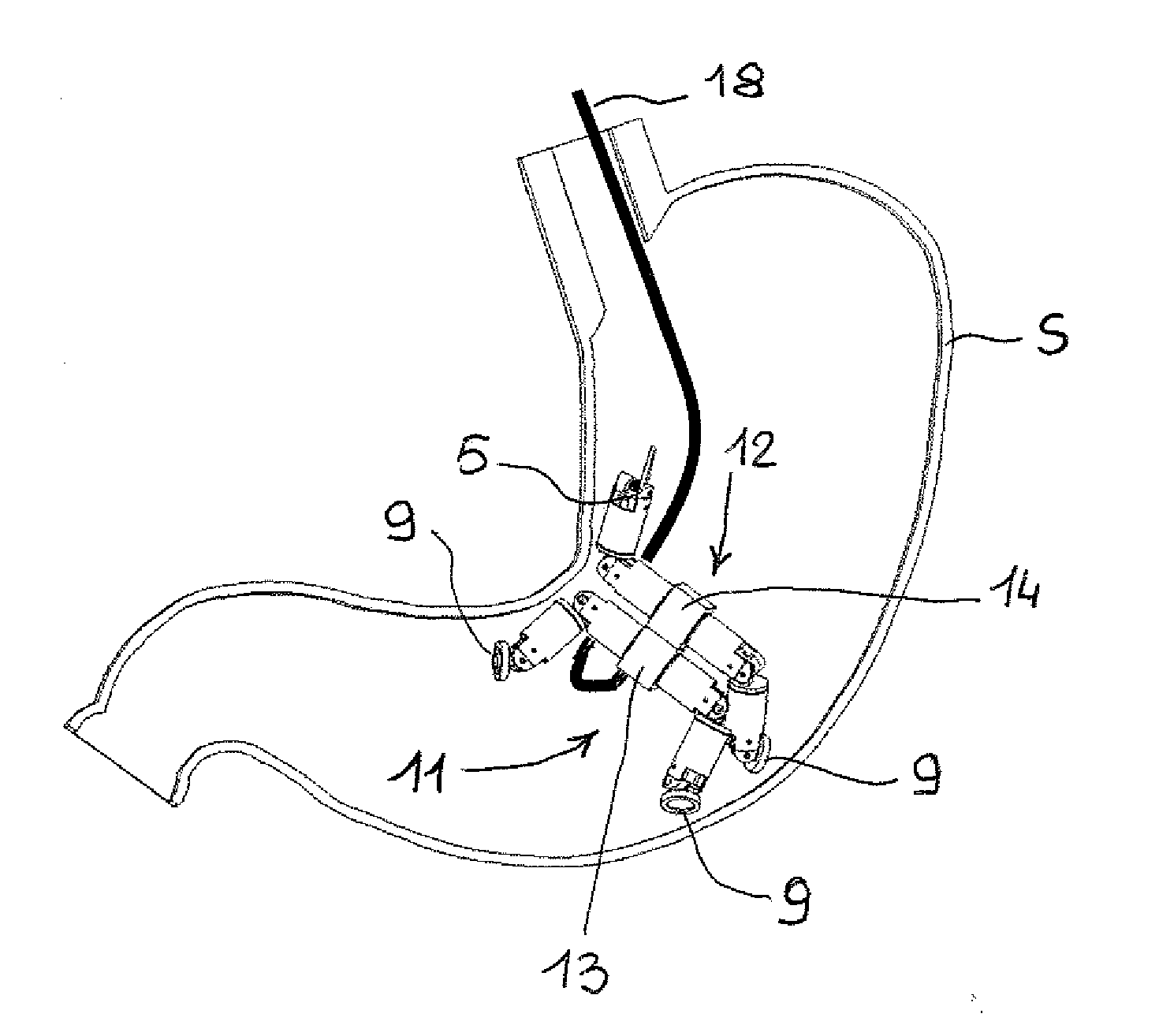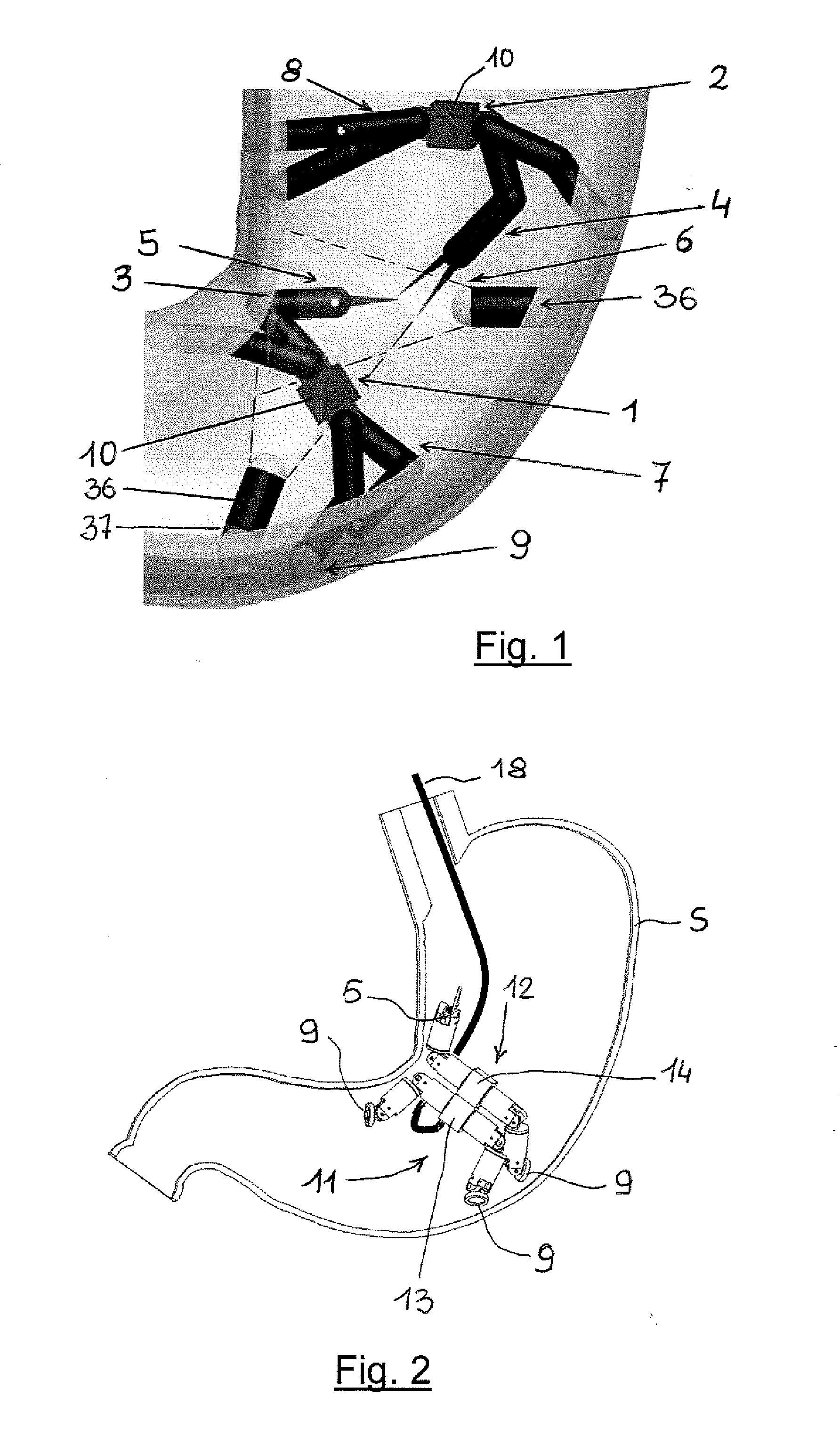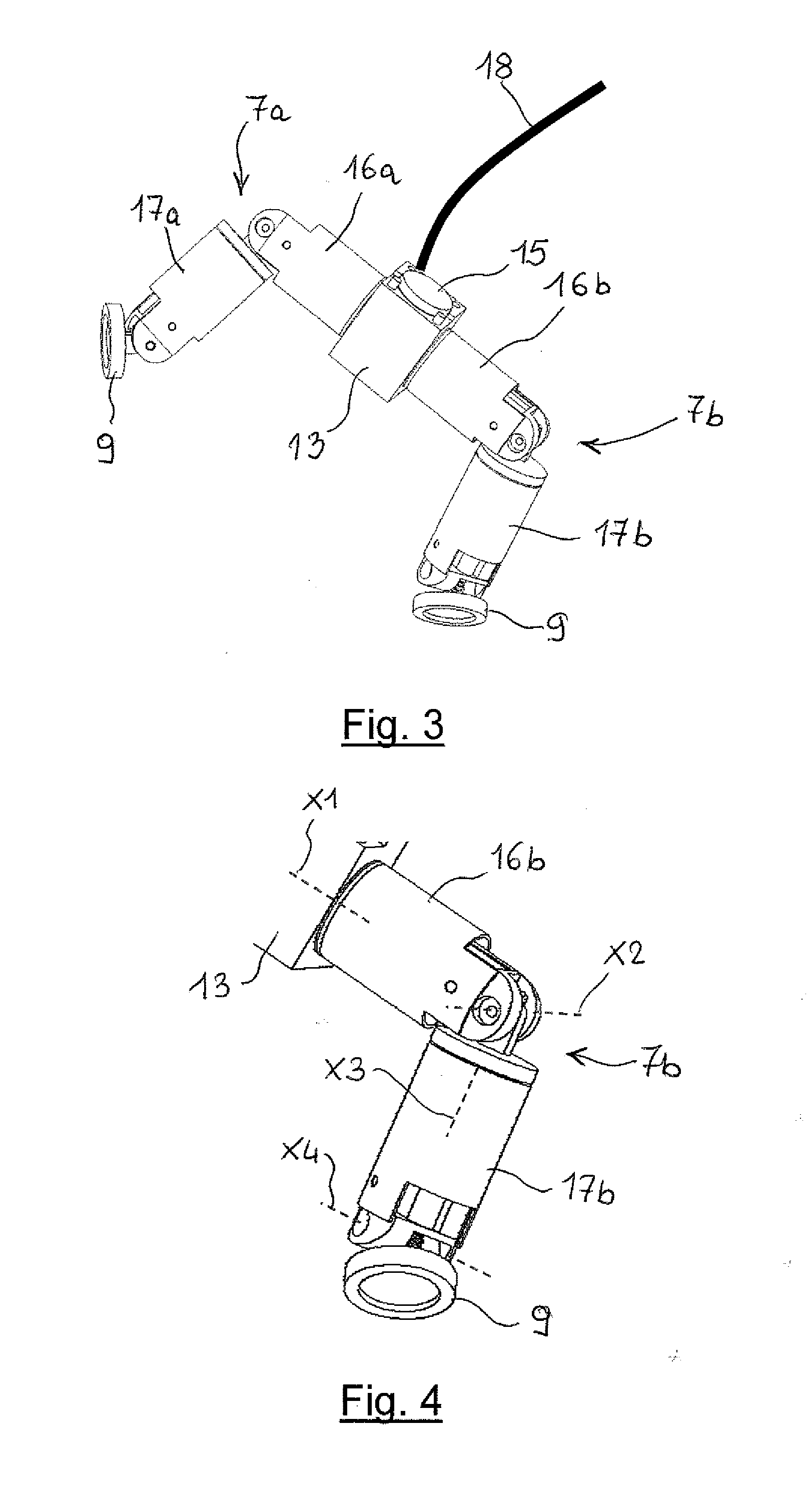Endoluminal robotic system
a robotic system and endoluminal technology, applied in the field of endoluminal surgery, can solve the problems of ineffective endoluminal procedures, unexplored robotics benefits, and current endoluminal procedures for gastrointestinal tract surgery, etc., and achieve the effects of reducing the number of degrees of freedom, increasing stability, and enduring to higher forces
- Summary
- Abstract
- Description
- Claims
- Application Information
AI Technical Summary
Benefits of technology
Problems solved by technology
Method used
Image
Examples
Embodiment Construction
[0027]As used in the present specification the term “robotic platform” is meant as a robotic framework or a set of robotic components when assembled and deployed in a body cavity to perform a surgical procedure. Likewise, the term “bimanual” is meant as having two surgical tools capable of being operated in the same way as the hands of the surgeon, with substantially the same degrees of freedom. A “snake-like robot” is defined as a flexible or articulated robotic functional unit, as in FIG. 3, which can be inserted into human body cavities through natural orifices thanks to its cylindrical shape. A single “snake-like robot” may connect with one or more similar “snake-like robots” to form a surgical robot, as shown in FIG. 2.
[0028]With reference to FIGS. 1 to 4, the endoluminal micro-robotic platform according to the invention comprises a first and a second deployable surgical robot, generally indicated as 1 and 2, each being equipped with an operating arm 3 and 4, bearing a surgical...
PUM
 Login to View More
Login to View More Abstract
Description
Claims
Application Information
 Login to View More
Login to View More - R&D
- Intellectual Property
- Life Sciences
- Materials
- Tech Scout
- Unparalleled Data Quality
- Higher Quality Content
- 60% Fewer Hallucinations
Browse by: Latest US Patents, China's latest patents, Technical Efficacy Thesaurus, Application Domain, Technology Topic, Popular Technical Reports.
© 2025 PatSnap. All rights reserved.Legal|Privacy policy|Modern Slavery Act Transparency Statement|Sitemap|About US| Contact US: help@patsnap.com



